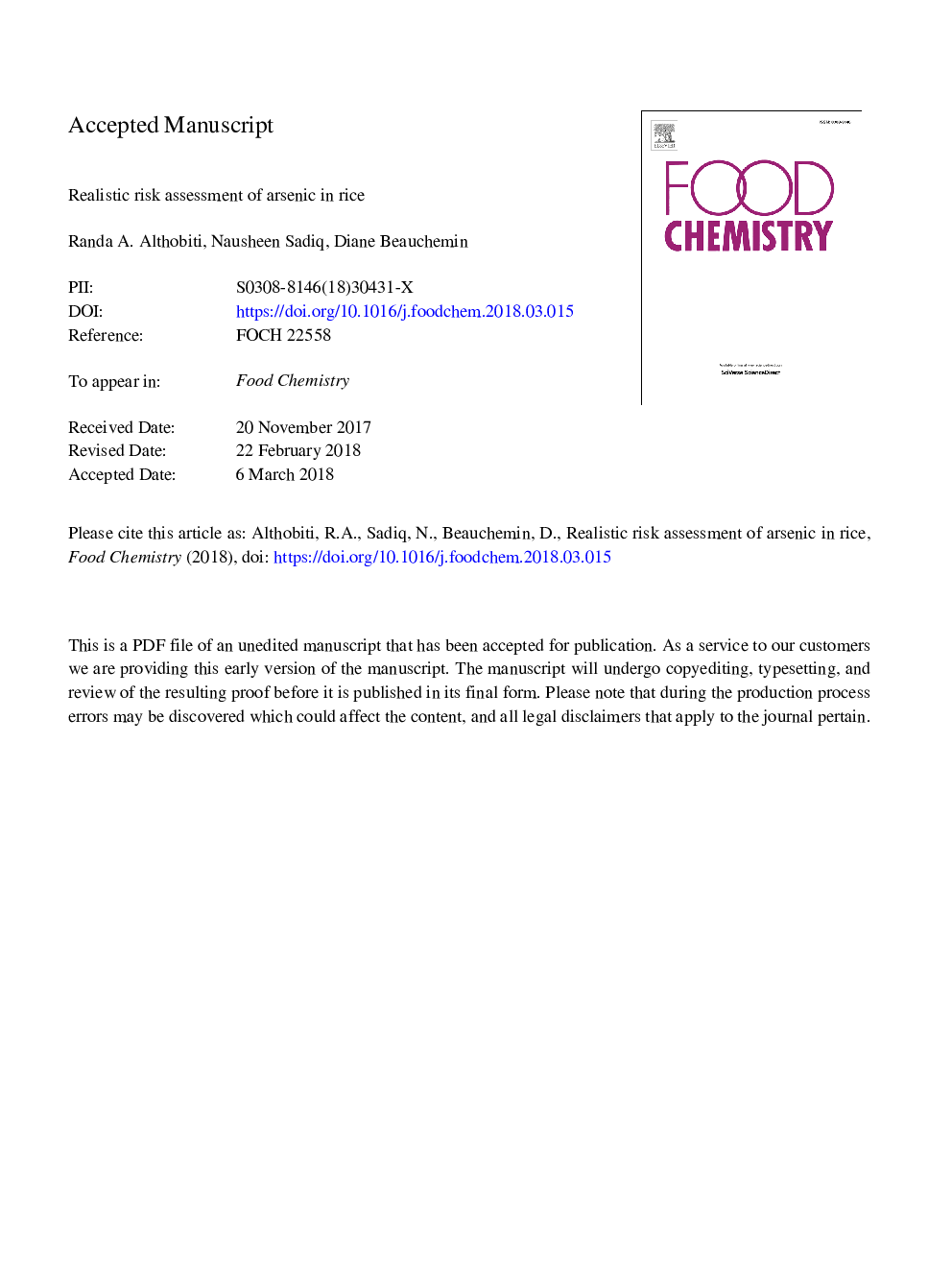| Article ID | Journal | Published Year | Pages | File Type |
|---|---|---|---|---|
| 7585240 | Food Chemistry | 2018 | 27 Pages |
Abstract
Over 3 billion people share a diet consisting mainly of rice, which may contain significant amounts of arsenic. Because the toxicity of arsenic is dependent on its chemical form and that it may be in a form that is not bio-accessible (i.e. dissolved in the gastrointestinal tract) and can thus not become bio-available (i.e. end up in the blood stream, where it may exert its toxic effect), the bio-accessibility of arsenic was determined in thirteen different types of rice. The effects of washing and cooking were also studied. The total concentration of arsenic ranged from 93 to 989â¯Âµgâ¯kgâ1 and its bio-accessibility ranged from 16 to 93%. Cooking only changed arsenic speciation in a few cases. However, simply washing rice with arsenic-free water before cooking removed 3-43% of the arsenic, resulting in all the rice tested except the most contaminated one being safe to consume by adults.
Keywords
Related Topics
Physical Sciences and Engineering
Chemistry
Analytical Chemistry
Authors
Randa A. Althobiti, Nausheen W. Sadiq, Diane Beauchemin,
